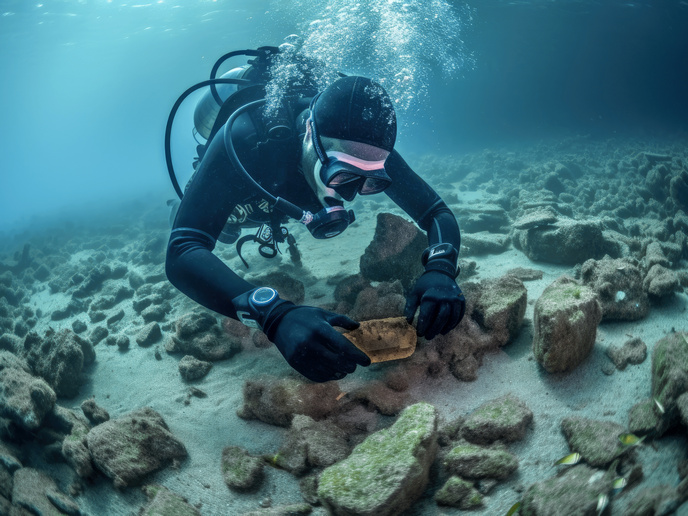Wooden items and baskets thousands of years old found underwater
We know very little about when and how prehistoric societies used items made from organic raw materials. The reason is simple. Although wood and other such materials must have been an essential part of everyday life in those societies, they decay rapidly in most environments and have therefore not been preserved in the archaeological record. Doing its part to improve this poor record, a new study supported by the EU-funded ILIAD and BEFOREtheFLOOD projects discusses 16 late prehistoric organic artefacts found in underwater sites in northern Israel. The study has been published in the journal ‘Forests’. The collection of 6 600 to 9 300-year-old findings described in the study comprises mainly wooden and basketry artefacts, as well as other plant materials that were discovered, surveyed and excavated from submerged sites along the Carmel Coast. “The waterlogged finds, including bowls, shafts, a wedge, a trough, a pitchfork, logs, a mat, and a basket, were found at sites spanning from the Pre-Pottery Neolithic to Middle Chalcolithic periods (ninth–seventh millennia cal. BP), constituting an unprecedented record of prehistoric wood and other perishable materials, providing us with new information about raw material preferences and manufacturing technologies,” write the study authors. How did these artefacts come to be preserved so well? After the late prehistoric sites they were found in had been inundated, they were covered by up to a 2-metre layer of sand. This produced anaerobic conditions that prevented the objects from being disturbed – that is, until recent decades, where a combination of human activities and seasonal storms removed the sand layer, exposing the submerged settlements and the artefacts. The importance of such perishable artefacts lies in the fact that they “speak for a rich and versatile array of functions as well as technical cognition,” according to the authors. They can therefore be used to study raw material preferences, wood carving technologies, ecological and environmental circumstances, provenance and skeuomorphs (objects that imitate the design of similar earlier artefacts made from another material). The researchers conclude “that wood was a widely accessible and amenable raw material.” They propose that scholars “should re-evaluate the place wooden objects occupied for past communities in the region.”
A meeting and a webinar
At its annual consortium meeting held in Barcelona in December 2023, the ILIAD project provided a live demonstration of its Digital Twins of the Ocean (DTO) technologies in 22 pilot sites across Europe, North Africa and the Middle East. The sites showcase how ILIAD’s technologies tackle different challenges specific to ocean industries. “The pilot sites will enable us to demonstrate the value of the DTO approach by engaging with a variety of stakeholders and topics,” notes Charalampos Ipektsidis of ILIAD coordinator Netcompany-Intrasoft, Belgium, in a news item posted on ‘Water Power & Dam Construction’. In the same month, ILIAD also held a webinar on its Ocean Information Model, a tool that enables full semantic interoperability within the project’s DTOs. ILIAD (INTEGRATED DigitaL Framework FOR Comprehensive MARITIME DATA AND INFORMATION SERVICES) ends in 2025. The BEFOREtheFLOOD (Neolithic coastal settlements and responses to environmental dynamics: A pioneering world lost beneath the Mediterranean Sea) project ends in 2027. For more information, please see: ILIAD project website BEFOREtheFLOOD project
Keywords
ILIAD, BEFOREtheFLOOD, prehistoric, artefact, material, wood, basket



